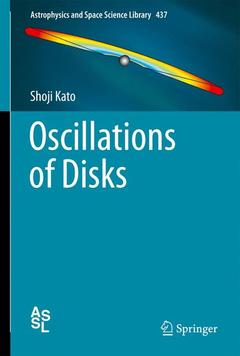Oscillations of Disks, 1st ed. 2016 Astrophysics and Space Science Library Series, Vol. 437
Auteur : Kato Shoji

In order to understand the basic processes of disk oscillations, studies on binary systems are of importance, as they offer valuable information on wave?wave coupling processes in disk oscillations. Accordingly, some characteristics of oscillations in deformed disks are also presented in this book.
The book consists of two parts. Points covered in Part I include, for instance, the basic characteristics of disk oscillations, classification of oscillation modes, and trapping of oscillations. In Part II, the focus is mainly on excitation processes of oscillations, while applications to observations are also discussed.
Prof. Shoji Kato
Emeritus professor, Department of Astronomy, Kyoto University
Explains the current state of disk-oscillation theory, providing a potentially important tool to accurately determine spins of black hole sources in the universe
Clarifies our current understanding of discoseismology as it becomes more important in future in elucidating the structure and evolution of astrophysical disks
Describes quasi-periodic oscillations in X-ray binaries, superhumps in dwarf novae, and long-term variations in Be stars and Be/X-ray binaries
Date de parution : 10-2016
Ouvrage de 261 p.
15.5x23.5 cm
Disponible chez l'éditeur (délai d'approvisionnement : 15 jours).
Prix indicatif 137,14 €
Ajouter au panier


